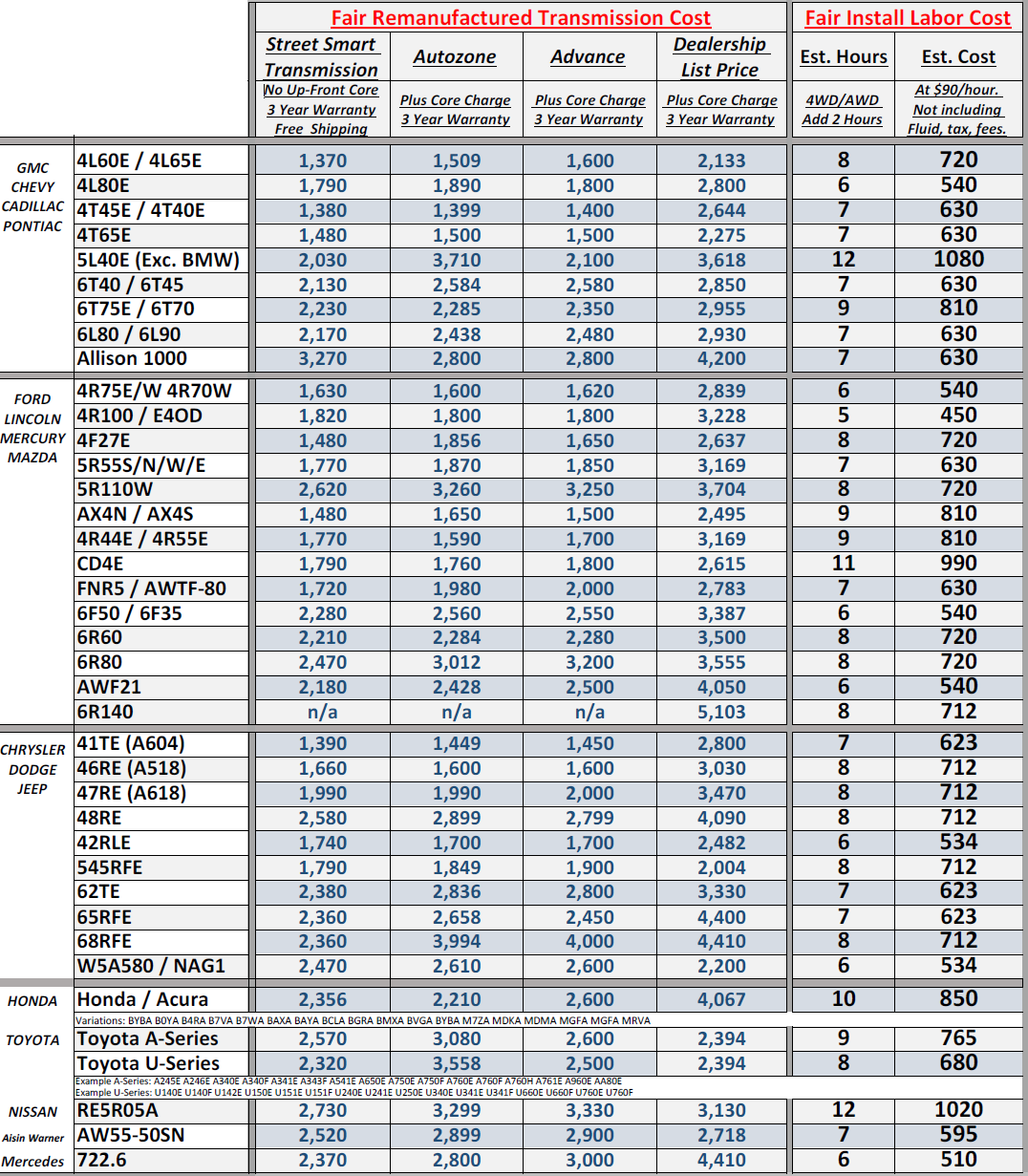Okay, since you know very little about cars, maybe it’s time to learn a bit, right? Let’s start with the transmission fluid level. Your Chev is 12 years old and I don’t know how faithful you are to having it serviced at the recommended intervals, so I will assume you handle things like many people — you want until something breaks, right? By the point that something breaks, your expenses become quite high, sometimes, to the brink of unaffordability for many people.
With that said, here’s a thought. Read the owner’s manual before you go any further. It will show you when your Chevrolet’s transmission should have been serviced. If you had followed those guidelines, the chances are excellent that we wouldn’t be having this conversation. Okay, it may seem like you are locking the barn door after the horses have escaped, but, that’s not the case at all. By reading the manual now, you will be avoiding similar occurrences in the future, especially if you purchase a later-model or new vehicle.
The first thing to do next is check the transmission fluid level. It is very possible that the level is down so far that your tranny’s torque converter — the device that sets things in motion within the automatic — may honestly be above the transmission fluid so that if there is any movement at all, there’s not fluid movement. Without transmission fluid moving from the torque converter, the turbine blades of the impeller never spin and the current that is supposed to be set up in the transmission so that everything works correctly, won’t happen and your car won’t move.
So, you can see just how important a simple thing like checking the transmission fluid is. If you don’t do it regularly over time, it is possible for the fluid to evaporate or “burn” away due to heat losses. As the fluid is an organic, it is subject to heat stress at a fairly low temperature so it is possible for your transmission to lose its fluid even without the usual suspects — leaks, broken seals, clogged filters, overfilling and/or underfilling.
Checking your fluid level is easy. Take the following steps:
- Either set the parking brake and run your car for 20 minutes to heat the transmission fluid or drive your car for 20 minutes, covering at least five miles so the fluid comes up to proper temperature.
- If you opt for allowing your car to idle and run, you can use this time to locate the transmission fluid dipstick. It may have an attention-getting color on the handle so you will see it. If you have driven your car, then, when you park, find the dipstick.
- Grab the top of the dipstick, making certain that you don’t burn yourself on the hot engine, and withdraw it from the filler neck.
- Wipe the dipstick with a clean cloth and reinsert it in the filler neck, sliding it in as far as it will travel.
- Withdraw the dipstick and check the fluid level. It should be between the FILL and FULL lines.
- Obtain a couple of quarts of the proper transmission fluid for your brand.
- Pouring carefully — use a small, clean funnel in the filler neck — add transmission fluid a bit at a time and then recheck the level. Small increments should enable you to ensure that your transmission fluid remain in between the lines.
- Replace the dipstick and you are finished.
Your next step with the fluid refilled is to check for proper operation. I suspect that the refill might just do it. However, if it does not, there are some other areas that you should have checked immediately.
Get your Chevy to a good independent transmission shop and ask the technician to check the transmission solenoids. On your transmission, there will likely be two, one on the outside of the valve body and the other on the inside. The solenoids are key to proper operation because they set the gear that you have selected with the gearshift. If one or both of them have failed — they can only last so long; 12 years is a long time — then your transmission won’t work.
To find out of the solenoids have failed, have the technician run a diagnostic with an OBD-II scanner and the proper software (each automaker has its own). The result codes that tell you what is wrong are stored in the engine’s ECM or engine control module memory. Get a printout of the error codes that may have been generated and follow the results. That should enable your technician to repair the tranny.
As you can see, this list is by no means comprehensive. It would take more space than I have here to answer your question. Don’t be shy about asking me specific follow up questions that might arise from the diagnostic as I do like to help. If I don’t know the answer, I know where to find it and will get it to you quickly.

